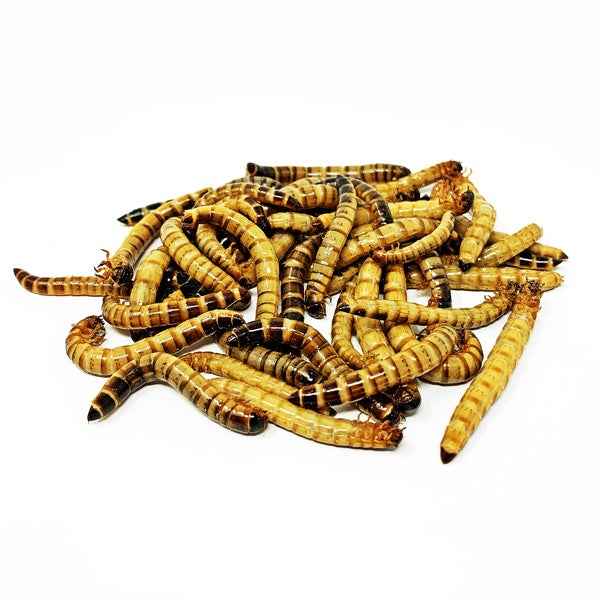NutriCricket
Live Superworms
Live Superworms
Product Information
Product Information
Superworms are the larvae of a darkling beetle (Zophobas morio). They are loaded with protein and have a soft exoskeleton, making them easier to digest than mealworms.
- Our large superworms are 1.5-2 inches.
- Important reminder: Some amount of variation in size is normal and expected, as these are a natural product.
Bulk superworms should be stored at room temperature in a well-ventilated plastic tub.
Do not refrigerate superworms. It will kill them.
Directions For Use
Directions For Use
Where Should I Store My Superworms?
Superworms should be kept in a well-ventilated smooth plastic container (e.g. cat litter box or wash basin), with 1-2 inches of worm chow covering the bottom. The chow serves as both their food source and bedding, so once it becomes sandy in appearance, be sure to add more.
Superworms prefer to stay buried, so there is little danger in them escaping, but we recommend that the sides of the container be smooth anyway. Keeping the container open is ideal, but if you have to use a lid (due to animals or small children), please make sure it is well-ventilated. When using a lid, check your container regularly for excess condensation, as this can lead to mold growth.
Do not refrigerate Superworms, it will kill them. They should be kept at room temperature (ideally around 78F).
What Do I Feed My Superworms?
Their bedding material also serves as their food source. If you do not wish to use our worm chow, you could use wheat bran or oatmeal instead. Do not use flavored or instant oatmeal.
What About A Water Source?
For hydration, add thinly sliced pieces of raw potato, carrot, or celery. Cucumbers or melons are great options too, since they are soft and easy for the superworms to chew. Replace these every 2 days or if you see signs of mold.
What Else Do I Need To Consider?
- Worms will turn a dark color once they're dead. Remove these worms immediately to prevent the spread of bacteria.
- The most common causes of premature death are excess moisture, over-heating, or extreme cold.
Couldn't load pickup availability
Share

